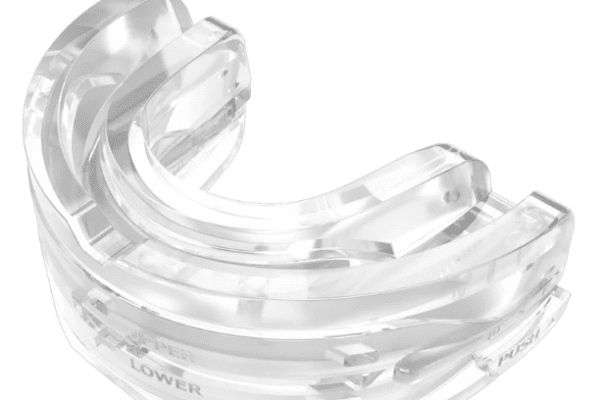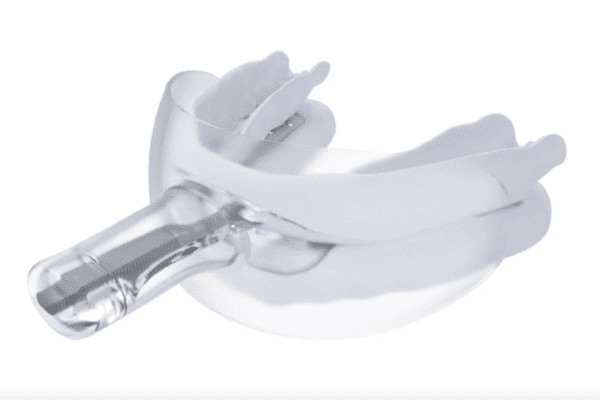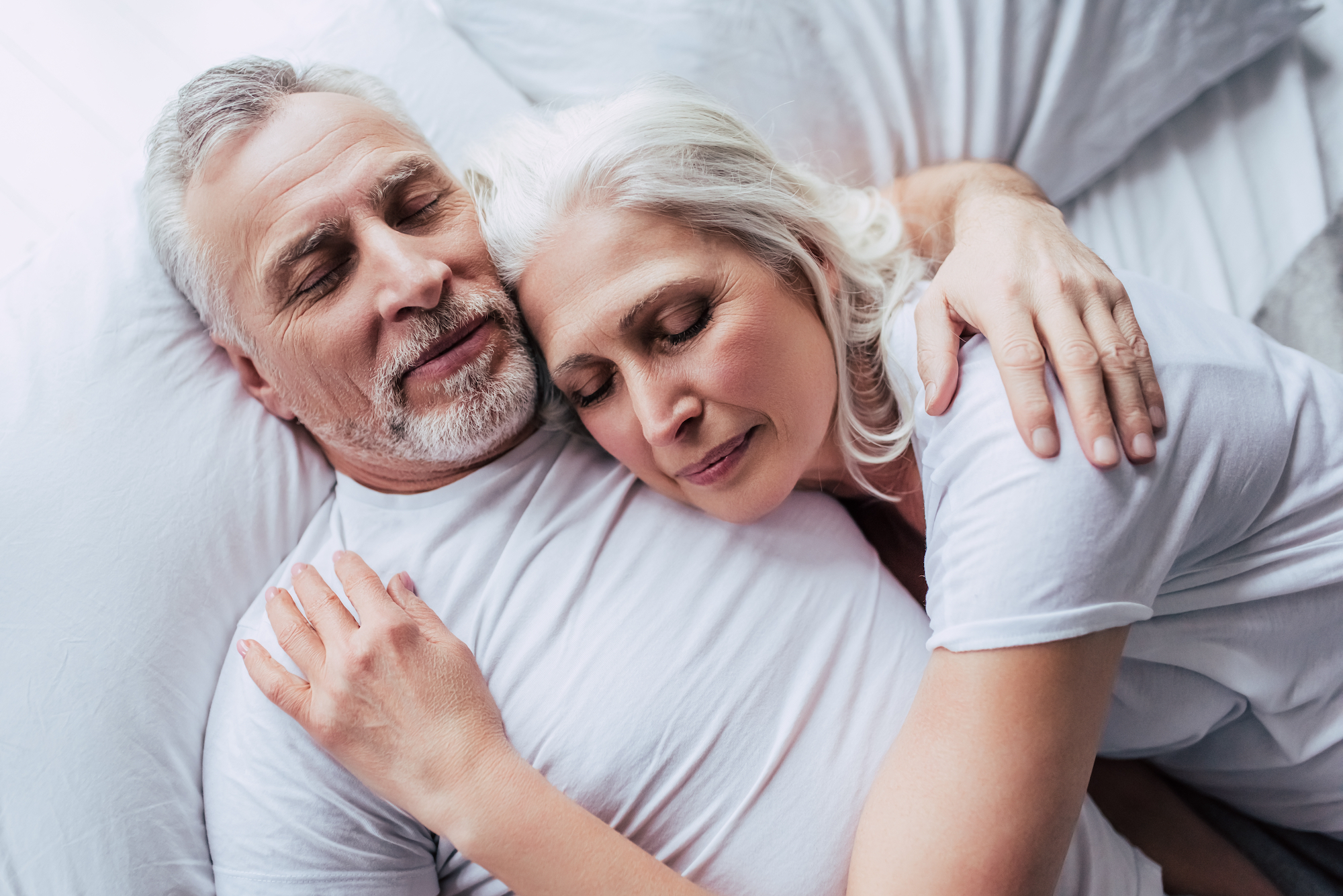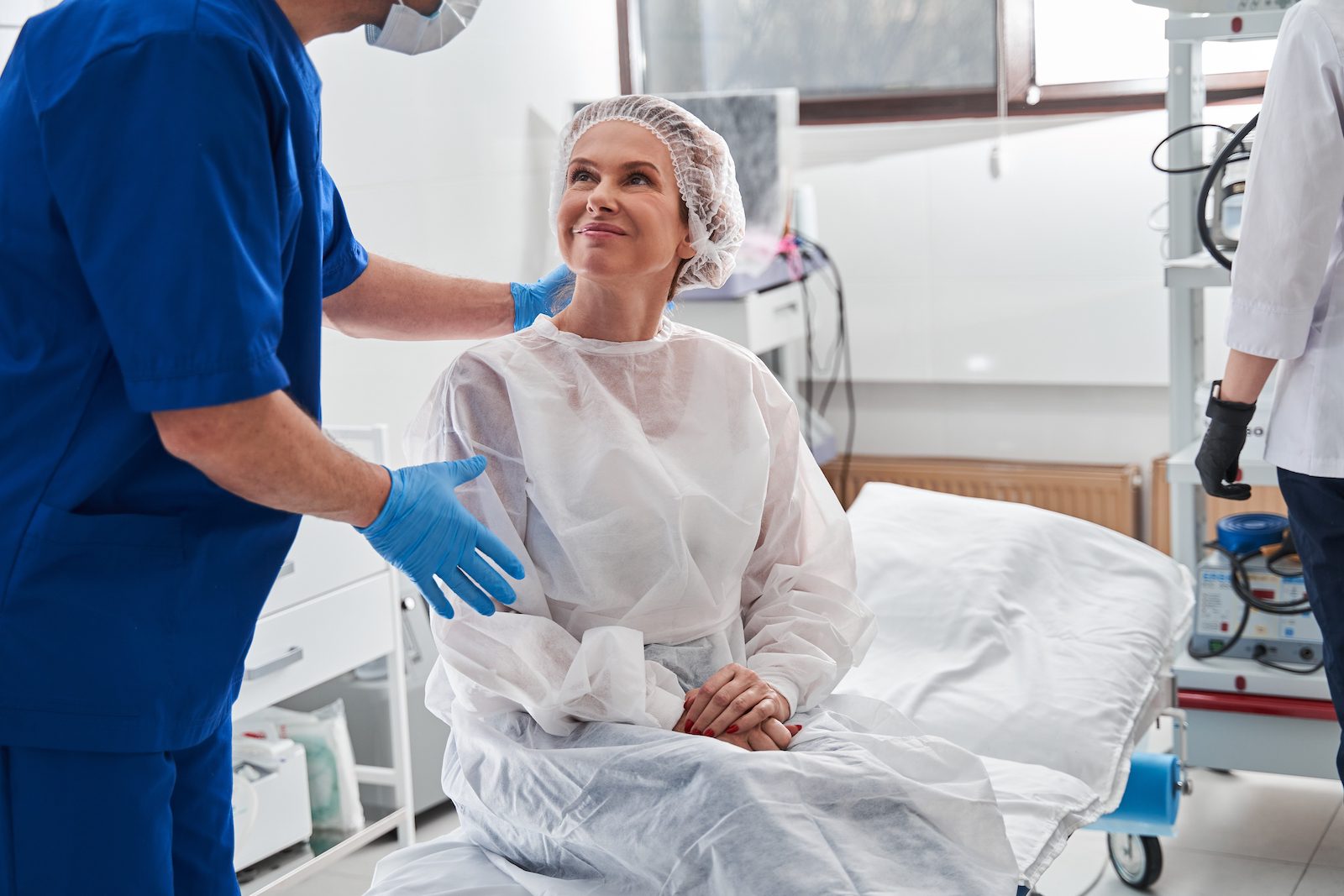Oral appliance therapy is gaining popularity as an alternative treatment for obstructive sleep apnea, especially for people who have trouble using a CPAP machine.
Oral appliance therapy uses FDA-approved mouth guards. This type of mouth guard is typically customized by a qualified dentist, who works with an individual’s doctor to determine if oral appliance therapy is appropriate. We cover different types of oral appliances for sleep apnea, how they work to improve OSA, and their strengths and weaknesses compared to other treatments.
How Do Mouth Guards Treat Sleep Apnea?
Removable oral appliances open the airway by adjusting the position of the jaw or tongue. This creates more space in the throat and can keep the upper airway from collapsing while a person sleeps.
Sleep apnea mouth guards are meant to be worn only during sleep. They are most frequently recommended for people with mild or moderate OSA, though they may improve severe OSA as well.
Different Types of Mouth Guards for Sleep Apnea
The two main types of sleep apnea mouth guards are mandibular advancement devices and tongue-retaining devices. Some newer devices are becoming available, but because they are still being researched, less is known about their effectiveness in treating OSA.
Mandibular Advancement Devices
Mandibular is a word that describes the lower jaw, or mandible. A mandibular advancement device (MAD), also called a mandibular advancement splint or a mandibular repositioning device, is a plastic mouth guard that covers your upper and lower teeth. It moves your lower jaw forward by a few millimeters or more, which helps open the airway.
A MAD can be a one-piece or two-piece device. The one-piece option is more rigid and doesn’t allow the mouth to move as much as a two-piece, which has two separate components linked together.
A qualified dentist will take a digital scan or get an impression and bite registration of your teeth to ensure that the MAD is a good fit. A MAD can be customized by size, material, how much it covers the teeth, how much jaw movement it allows, and how far the lower jaw is advanced forward, among other characteristics.
A customized MAD is more effective and generally more comfortable, and more likely to fit well on the teeth, than premade MADs available over-the-counter. Premade MADs, also known as “boil and bite” devices, are typically heated and molded by pressing them onto the teeth. These are not as customizable or effective as those fitted by a dentist. Additionally, they are not FDA-cleared to treat sleep apnea, only snoring.
Another concern with over-the-counter MADs is that it’s possible to purchase these without a confirmed sleep apnea diagnosis and treatment supervision by a doctor. It’s important to work with a physician when pursuing MAD therapy, whether you’re interested in using an over-the-counter device or a customized mouth guard.
Tongue-Retaining Devices
A tongue-retaining device (TRD) uses suction to keep the tongue in a forward position, preventing it from falling back into the airway. TRDs can be used by people who do not have enough teeth to keep a MAD in place or who cannot use a MAD for other reasons.
TRDs have not been as well-studied as MADs, so it’s less clear how effective they are at treating OSA. As a result, they are not prescribed or used as often.
Benefits of Sleep Apnea Mouth Guards
For people who dislike PAP therapy or have trouble using PAP therapy consistently, mouth guards may have several benefits. For example, mouth guards can be:
- Quiet
- Portable
- Easier to use
- Functional without a power supply
For these reasons, some people find mouth guards to be more manageable than CPAP and may use them with greater regularity.
Risks of Sleep Apnea Mouth Guards
Wearing an oral appliance may cause symptoms to develop over time. Symptoms can include:
- Teeth discomfort
- Jaw joint pain
- Dry mouth
- Extra saliva production
- Gum irritation
- Teeth grinding
- Teeth shifting and loosening
- Bite changes due to the lower jaw shifting forward
These side effects are usually mild and temporary, often improving after a few weeks. It’s important to have follow-up visits with a dentist or health care provider to adjust the mouthpiece, make sure it fits properly and comfortably, and address any side effects that develop.
How Effective Are Sleep Apnea Mouth Guards?
Mandibular advancement devices are effective, but less so than CPAP, at reducing pauses in breathing and improving blood oxygen levels during sleep. However, research suggests that MADs perform similarly to CPAP when it comes to improving daytime sleepiness, reducing snoring, and lowering blood pressure. MADs may also reduce symptoms of depression and improve overall quality of life.
For some people, MADs are more comfortable than CPAP, making them more suitable for long-term use. MADs that are customized and fitted by dentists tend to be more comfortable and effective than premade MADs found in stores.
Although not as well studied, tongue-retaining devices may also reduce pauses in breathing, improve blood oxygen levels, and decrease daytime sleepiness.
Ultimately, OSA treatment can only be effective if a person uses it consistently. Some studies indicate that roughly half the people prescribed CPAP therapy don’t use it regularly or give it up completely. If these people find oral appliances more tolerable and are more willing to use them, they will be more likely to benefit from their treatment.
When Not to Use a Sleep Apnea Mouth Guard
While sleep apnea mouth guards are simple to use and often effective, they should not be used in certain situations.
- Urgent need for therapy: People who have severe OSA or who feel very sleepy while driving may need to be treated immediately. Experts generally prefer CPAP for these cases because it takes less time to be effective, while finding the optimal fit for a mouth guard can take weeks or months.
- Low blood oxygen levels: If a person’s OSA causes blood oxygen levels to fall below 70% during sleep, an oral appliance may not be enough to significantly improve the problem.
- Certain dental conditions: MADs should not be used by people who don’t have enough teeth to hold the device in place, who have disease or immobility of the jaw joint, significant periodontal disease, a gum infection, or who wear teeth realignment devices such as braces or retainers. Any pending dental work, including fillings or crowns, must be completed before the oral appliance is fitted.
- Central sleep apnea: Central sleep apnea (CSA) has a different cause than OSA. While in OSA the airway is blocked, in CSA, the brain fails to signal the body to breathe. Since a mouth guard only acts on the airway, it is not useful for people with CSA.
Getting Your Sleep Apnea Mouth Guard
Anyone can purchase a premade “boil and bite” mouth guard over the counter. But to obtain an effective and customized sleep apnea oral appliance, you must first receive a diagnosis of obstructive sleep apnea.
Talk with your doctor about any symptoms you may have. Common OSA symptoms include gasping for air while asleep, loud snoring, morning headaches, daytime sleepiness, and trouble paying attention.
If your symptoms suggest OSA, your doctor will likely order a sleep study. In a sleep study, your breathing patterns, heart rate, blood oxygen levels, and other metrics are measured while you sleep. These metrics are documented and interpreted by a sleep technologist, and the results are used to confirm an OSA diagnosis. For some people, an at-home sleep apnea test may be a viable option.
After you are diagnosed with OSA, your doctor will discuss possible treatment options with you.
CPAP is usually the treatment that health professionals recommend first. But if CPAP does not work for you, or if you are unable to tolerate CPAP and are unlikely to keep using it, your doctor may recommend an oral appliance as an alternative.
The next step may be to see a qualified dentist who treats sleep apnea. Your dentist will examine your mouth health and your jaw mobility. If all looks healthy, your dentist will create a mold of your teeth to design your device and ensure it fits you well.
Adjusting Your Sleep Apnea Mouth Guard
After you get your MAD, your dentist will likely ask you to wear it every night. Over several weeks or months, your dentist will follow up with you and adjust how far the device moves your lower jaw forward.
The goal of these adjustments is to open your airway as much as possible while maintaining your comfort while you sleep.
Monitoring Mouth Guard Effectiveness
Once your mouthpiece has been adjusted, your doctor and dentist may continue to follow up with you to learn whether your sleep apnea symptoms improve and whether new symptoms develop from wearing the mouth guard.
Even if your OSA symptoms have gotten better, the condition may still pose a threat. For this reason, your dentist will continually adjust your mouth guard. Your physician may recommend another sleep study after the mouth guard has been adjusted.
Still have questions?
Sleep apnea products can be confusing. If you need individualized assistance, send us an email at [email protected] with your questions and we'll help find the best fit for you.

















